
Using live Killifish as bait is a common practice in various fishing spots. Anglers seeking the excitement of landing sizeable catches such as Largemouth Bass, Catfish, Flounder (Fluke), and Redfish must master the art of bait presentation. Anglers favor Killifish for their resemblance to the preferred prey of these fish. Its lifelike movements and appearance effectively lure in these coveted species.
Whether fishing in lakes or the ocean, using live Killifish correctly can help you catch a big fish. Techniques like hooking the Killifish through its lips or dorsal fin can make it look very appealing to hungry Bass or Catfish. This article provides detailed tips on using live Killifish to increase your chances of a successful catch across different fishing environments.
What is a Killifish?
Before diving into how to use Killifish as bait, let’s first understand what it is. Killifish are small fish found in freshwater and brackish water environments. They come in various species and colors but are known for their long, slender bodies and pointed snouts. These fish are commonly used as bait due to their appealing movement underwater, which triggers predatory instincts in larger fish species.
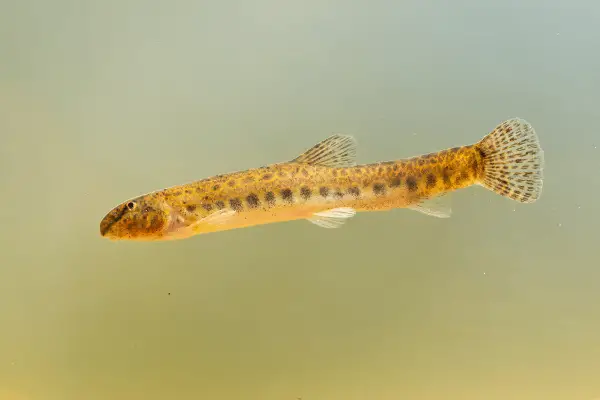
Finding and Keeping Killifish
Locating killifish can be challenging but usually found in shallow waters, near vegetation, or structures such as rocks or logs. To catch them, you will need a small net and a bucket of water to keep them alive. When capturing Killifish, handle them with care as they are delicate creatures. It is best to keep them in a cool, dark, and aerated environment until you can use them as bait.
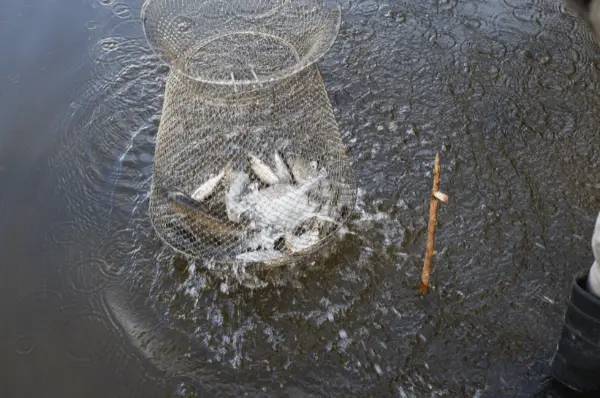
Types Of Killifish
- Golden Shiner
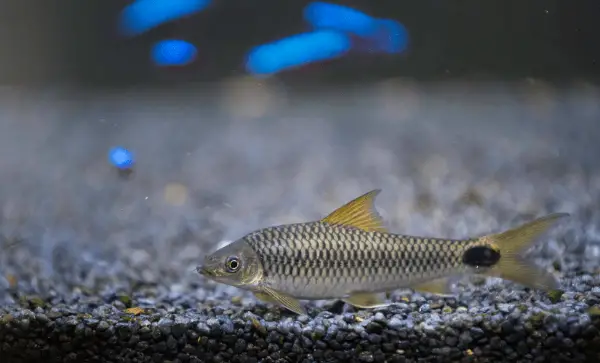
- Banded Killifish
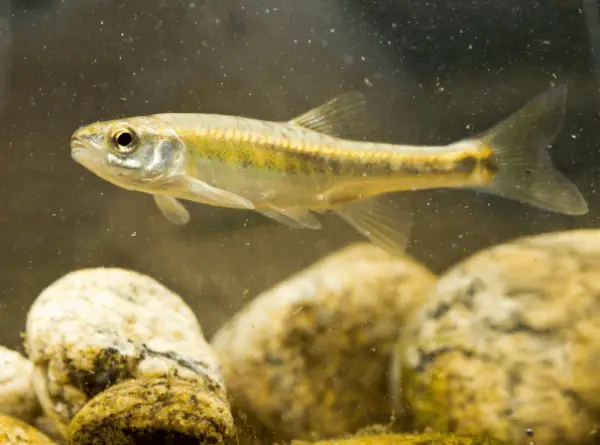
- Mummichog
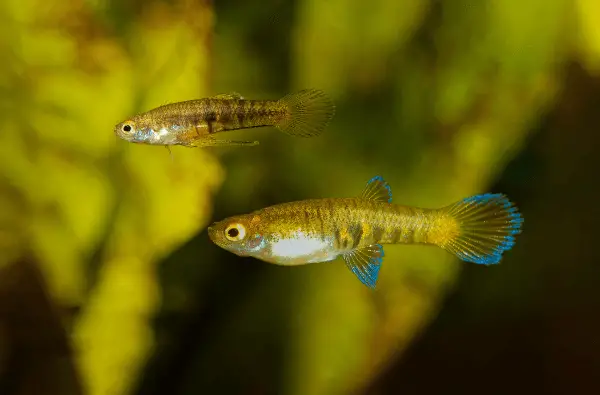
- Gulf Killifish
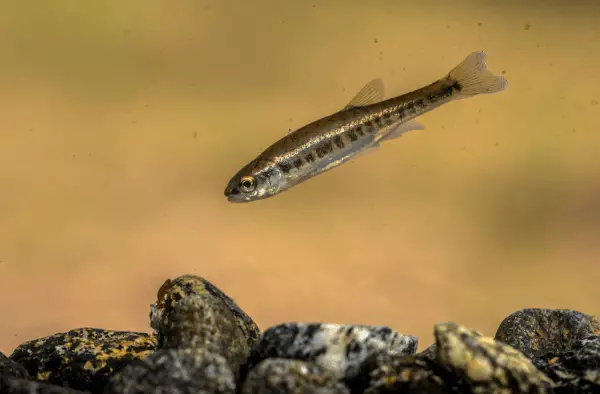
The most popular types of Killifish used for fishing include Golden Killifish, Mud Minnows, and Banded Killifish. These fish can be found in shallow waters such as ponds, streams, and marshes, making them easily accessible for bait collection. Remember that certain types of Killifish may be more effective in different environments or for certain types of fish, so it’s always a good idea to do some research before your fishing trip.
How To Use Live Killifish As Bait
Now that you know what Killifish is and the different types available, let’s discuss the best practices for using them as bait.
- Please start with the right equipment: When using live Killifish as bait, it’s essential to have the right equipment. This includes a well-maintained aerated bait bucket or live well to keep the fish alive and healthy until use.
- Use the proper hook size: The size of your hook should match the size of your Killifish. For example, smaller Killifish will require smaller hooks, while larger ones may need bigger hooks.
- Consider the time of day: Killifish are most active during dawn and dusk, so these are the best times to use them as bait. However, you can also use them during other times of the day if they are available in your desired fishing spot.
- Experiment with different rigging techniques: There is no way to rig a killifish. Some popular methods include hooking the fish through its lips or tail or using multiple hooks to create a more realistic movement in the water.
Choosing the Right Species for Your Target Fish
When it comes to fishing with Killifish, the type of Killifish you use can make a big difference in your success. For Largemouth Bass, opt for golden top minnows or banded Killifish. For Catfish, mud minnows or common Killifish are good choices. And for Redfish, go for Gulf killifish or bull minnows. Experiment with different species and see which works best for your desired catch.
Best Fishing Spots for Killifish
Understanding where to cast your line is as important as knowing how to bait your hook to maximize your success when fishing with Killifish. Here are some optimal fishing spots for targeting Largemouth Bass, Catfish, and Redfish with Killifish.
Largemouth Bass
Freshwater habitats like lakes and rivers are prime spots for Largemouth Bass. They’re attracted to the surface action and will often strike at Killifish presented in a way that simulates an injured prey.
For Largemouth Bass, focus on areas with plenty of cover, such as lily pads, weed beds, or submerged structures like logs and docks. Bass use these areas for protection and as ambush points for their prey. Killifish used near these structures can be particularly enticing to them.
Catfish
When targeting Catfish, look for slow-moving or still waters, such as the bottom of pools, bends, and eddies in rivers or mudflats in lakes. Places where water depth changes abruptly are also promising, as Catfish often cruise these “drop-offs” in search of food.
In addition, these bottom dwellers are found in an array of freshwater environments. A killifish just above the silty beds can be irresistible to a foraging Catfish.
Redfish
When fishing in saltwater and coastal regions, you’ll find Redfish patrolling the shallows and edges of the water. They respond well to live bait suspended near the surface.
For Redfish, shallow coastal waters, estuaries, and marshes are prime spots. They are particularly fond of areas with oyster beds and grass flats. During high tide, Redfish move into the grassy marshes to feed, making them ideal targets for your killifish bait.
Furthermore, understanding the preferred habitats of these fish and aligning your fishing strategy to match can significantly enhance your chances of a successful outing. When combined, selecting the right Killifish, employing the appropriate technique, and fishing in the right spots are vital factors that can lead to an enjoyable and fruitful fishing experience.
Bait Presentation Techniques for Live Killifish as Bait
For Largemouth Bass
Topwater Presentation
- Hook the Killifish through the top lip or just before the dorsal fin.
- Gently cast your line to avoid detaching the bait.
- Allow the Killifish to swim erratically near the surface, enticing the Bass to strike.
Using Spinner Rig For Largemouth Bass
- Use a spinner rig to present the Killifish just above any underwater structures.
- The spinning motion of the rig will attract Largemouth Bass and can lead to more successful strikes.
- Use a spinner rig with a pre-weighted hook.
- Attach the Killifish to the hook’s underside, exposing half of its body for natural movement.
- Retrieve at varying speeds and depths to mimic live prey.
For Catfish and Redfish
Bottom Fishing
- Attach a weighted hook to your line.
- Hook the Killifish through the top lip or nose.
- Let it drop to the bottom and wait for a bite.
Jigging
- Attach a colorful killifish to a jig head and cast near structures or drop-offs.
- Jig the bait up and down to mimic live prey movements.
Live Lining
- Hook the Killifish through the top lip or nose and cast near the surface.
- Allow it to swim freely, enticing Catfish and Redfish with its natural movements.
Using these presentation techniques and choosing the suitable killifish species for your target fish and fishing environment can improve your chances of a successful and enjoyable fishing trip. Remember always to follow local regulations and ethical guidelines when fishing with live bait to ensure the sustainability of our aquatic ecosystems.
Using Carolina Rig For Catfish
- Use a Carolina rig by threading a sinker onto your line above a swivel and leader.
- Attach a circle hook through the lips of the Killifish to ensure it swims naturally.
- Cast your line into the hot spots where Catfish are likely to feed.
Using Popping Cork Rig For Redfish
- Affix a popping cork above the Killifish to keep it at the desired depth.
- Hook the Killifish through the lips for a natural swimming motion.
- Every few minutes, twitch the cork to create a popping sound that mimics feeding fish, drawing attention to your bait.
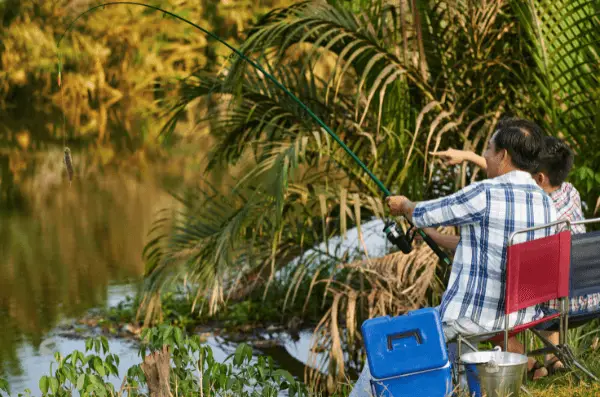
Tips for Successful Fishing With Killifish
- Keeping Them Alive: To ensure your Killifish stays alive and active on your hook, consider using a bait bucket or aerator to maintain oxygen levels.
- Switching up Sizes: Vary the size of your killifish bait based on the fish you’re targeting. Smaller ones work well for Largemouth Bass, while larger ones may entice Catfish and Redfish.
- Fresh vs Frozen: Fresh Killifish is the preferred choice for most fish species, but frozen ones can also work effectively if that’s not an option. Just make sure to thaw them properly beforehand.
- Proper Hook Placement: Good hook placement keeps the Killifish alive longer and ensures more natural movement, which is critical to attracting fish.
- Adapting to Water Conditions: Be ready to change your tactics and presentation based on water clarity, temperature, and other environmental factors.
- Patience and Observation: Study the behavior and patterns of your target fish. Sometimes, slight adjustments to your presentation can make all the difference. Additionally, patience is key when waiting for a strike.
- Live Bait Care: Keep your Killifish alive and healthy using an aerated live or bucket with clean water. This will ensure that your bait stays lively and attractive to fish.
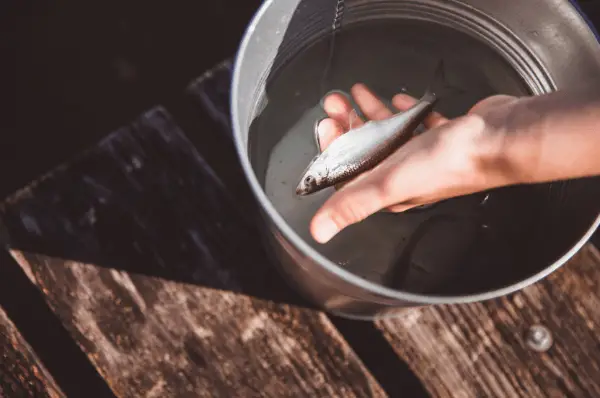
Additional Tips for Success
- Use a hook that won’t easily tear through the Killifish’s delicate skin.
- Ensure your bait is lively and active by keeping it in well-oxygenated water before use.
- Vary the size of your Killifish to match the size of your target species. Large fish may ignore small baits, while small fish may not be able to eat large baits.
- Experiment with different rigging techniques and bait movement to find what works best in your chosen fishing environment.
- When targeting multiple species, consider using a combination of bait presentation techniques or switching between them until you find the most effective one for each type of fish.
- Vary your retrieval and presentation techniques to determine what works best for the specific species and location you’re targeting.
- Keep a steady hand when casting to avoid damaging the delicate bait.
- Check local regulations and ethical guidelines when fishing with live bait to ensure sustainable practices.
Following these tips and adapting them to your specific fishing conditions can increase your chances of success with Killifish as bait for Largemouth Bass, Catfish, and Redfish.
Conclusion- Live Killifish As Bait
Perfecting the art of showcasing Killifish in various ways tailored to different species, such as a topwater presentation for Largemouth Bass, a Carolina rig for Catfish, or a popping cork display for Redfish, can significantly improve your fishing trips.
Remember that the nuances of your approach matter as much as where you fish and what you’re targeting. Through dedication and trying out different methods, you can excel at using live Killifish as bait and boost your odds of reeling in a sizable catch.
FAQs for Live Killifish As Bait
Q. Can I use live Killifish as bait for fishing?
A. Yes, using live Killifish is a common practice among anglers.
Q. Is it legal to use live Killifish as bait?
A. Regulations regarding using live bait may vary by location, so check local laws and guidelines before using live Killifish.
Q. Are there any specific techniques for using live Killifish as bait?
A. Anglers often rig the live Killifish on a hook and cast it into the water to attract larger fish.
Q. What types of fish can be caught using live Killifish as bait?
A. Largemouth bass and other predatory fish are commonly targeted by anglers using live Killifish as bait.
Q. How do I keep Killifish alive while fishing?
A. Keeping them in a well-aerated container with clean water and regularly changing them is essential to ensure survival.
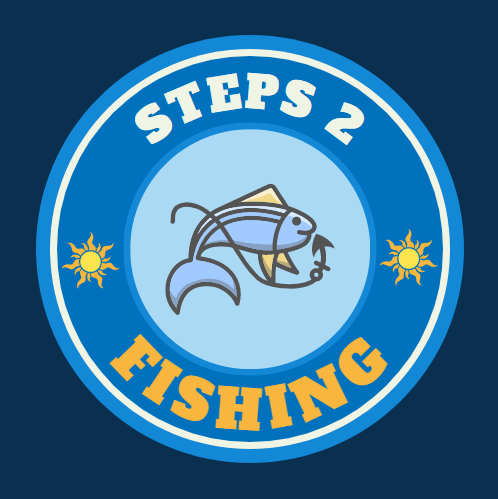

Leave a Reply